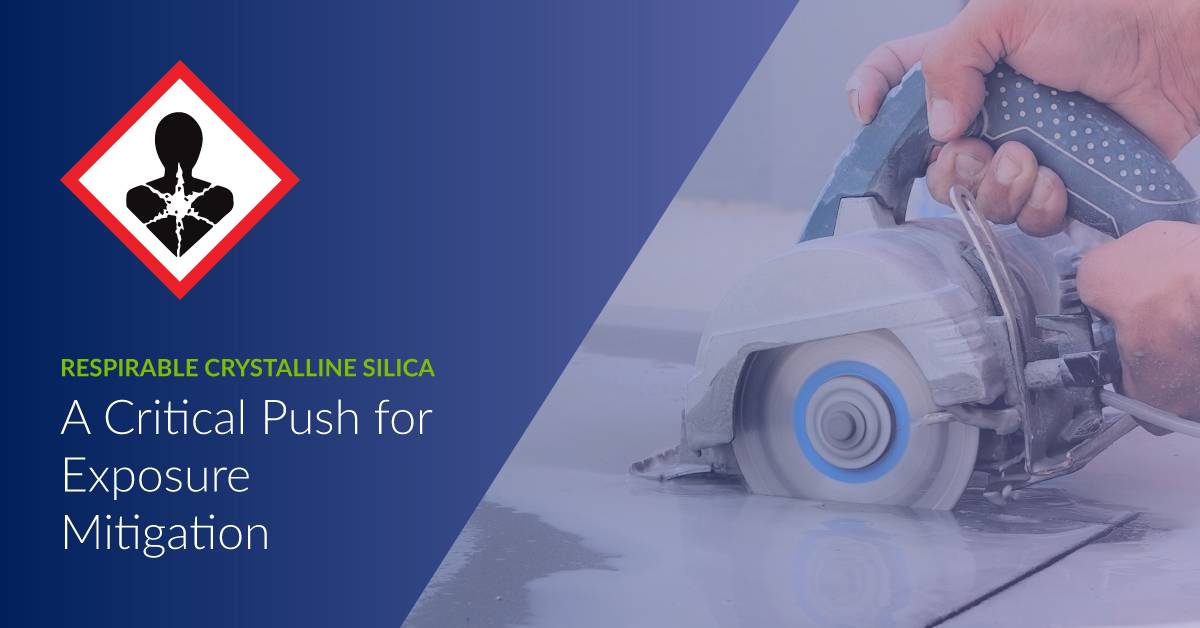Dubbed ‘the new asbestos’ due to its hazardous qualities, respirable crystalline silica (RCS) is a respirable dust created when material containing crystalline silica is worked and a very fine dust is generated. Because of the particulate size, at less than 4 microns, the dust stays airborne for longer and can travel further than larger particles. This makes it more likely to enter the airways at harmful levels.
The inhalation of silica dust produced through the handling and modification processes of materials like engineered stone have been linked to various occupational respiratory diseases. Exposure to RCS has serious implications to workers’ health.
The Cancer Council estimates that about 587,000 workers are exposed to RCS dust each year in Australia. Are your contractors among them?
Read on to learn how Cm3 is assisting businesses to mitigate RCS exposure on their worksites.
What is Respirable Crystalline Silica?
Dust is not an uncommon occurrence on worksites, particularly across the manufacturing and construction sectors, so what is it that makes RCS dust so hazardous?
Silica is silicon dioxide, one of the most abundant natural minerals found in a variety of materials utilised in the construction and manufacturing industries. It most commonly occurs as quartz. RCS dust is generated through cutting or sanding of materials containing silica.
The most common illness resulting from repeated, or significant (very high levels) inhalation of RCS dust is Silicosis, a build-up of silica in the lungs and breathing passages that leads to scarring and breathing limitations. Workers who inhale silica dust are also more likely to develop lung cancer among various other occupational related illnesses.
RCS dust can be produced through the manufacturing or modification processes of a variety of silica-rich materials.
Safe Work Australia lists work activities that can generate RCS dust, including but not limited to:
- Abrasive blasting
- Angle grinding, jack hammering and chiselling of concrete or masonry
- Brick, concrete, or stone cutting
- Clay and stone processing machine operations
- Construction labouring activities
- Excavation, earth moving and drilling plant operations
- Fabrication and installation of engineered stone countertops
- Foundry casting
- Hydraulic fracturing of gas and oil wells
- Mining, quarrying, and mineral ore treating processes
- Paving and surfacing
- Pottery making
- Tunnelling
Source: Crystalline silica and silicosis | Safe Work Australia
Mitigating prolonged exposure on your worksites.
In most states and territories in Australia, a ban on engineered stone will come into effect on the 1 July 2024. Bans on some engineered stone products are likely to reduce the risks in areas such as new home building. However, risks will remain in the processing and removal of existing materials, and in other industries and applications where silica is present.
Introducing effective control measures and health monitoring is essential to ensure workers are protected against RCS dust exposure.
Here are six things you can do to help protect your workers from exposure to RCS:
- Understand the sources and assess the risk of silica dust exposure at your workplace.
- Using the hierarchy of controls, identify and implement control measures to reduce the risk of RCS exposure to workers.
- Carry out air monitoring to assess the level of silica dust in your workplace and ensure your workers are not exposed to levels of RCS dust above the workplace exposure standard (WES).
- Ensure your staff are trained to recognise RCS exposure scenarios and the risks associated with exposure.
- Stay up to date with the latest developments in legislation and best practice regarding RCS.
Important: These items are sourced from legislation in various states and territories but are all good practice. Check your Regulator’s site for which ones are mandatory for your business.
Workplace exposure standard (WES) for respirable crystalline silica
The workplace exposure standard (WES) is a nationally accepted standard for RCS, which aims to control exposure in cases where elimination or substitution is not reasonably practicable and/or the risk cannot be fully controlled using these methods. The 8-hour time weighted average exposure standard is 0.05mg/m3, meaning workers must not be exposed to levels of RCS dust greater than 0.05mg/m3 over an eight-hour day.
Legislative obligations surrounding RCS are not nationally uniform. Further information regarding your obligations to manage RCS dust can be found on the websites of each of the State and Territory Authorities.
Read more about SafeWork Australia’s recommendations to manage RCS exposure on worksites.
How businesses are managing RCS compliance with Cm3
The true number of RCS-related illnesses remains unknown, with many symptoms of occupational respiratory disease presenting later in life. It is imperative that employers all affected evaluate the level of risk on their sites and navigate the latest relevant legislative obligations to manage risk arising from exposure to RCS dust.
To address these concerns effectively and support the efforts of regulators to minimise RCS related illness, Cm3 has launched a newly developed Risk Review.
Contractors on Cm3 are now able to complete this risk review to demonstrate to their clients that they are prepared and can manage the risks associated with RCS dust whilst conducting their work.
Contact Cm3 to learn more today.
